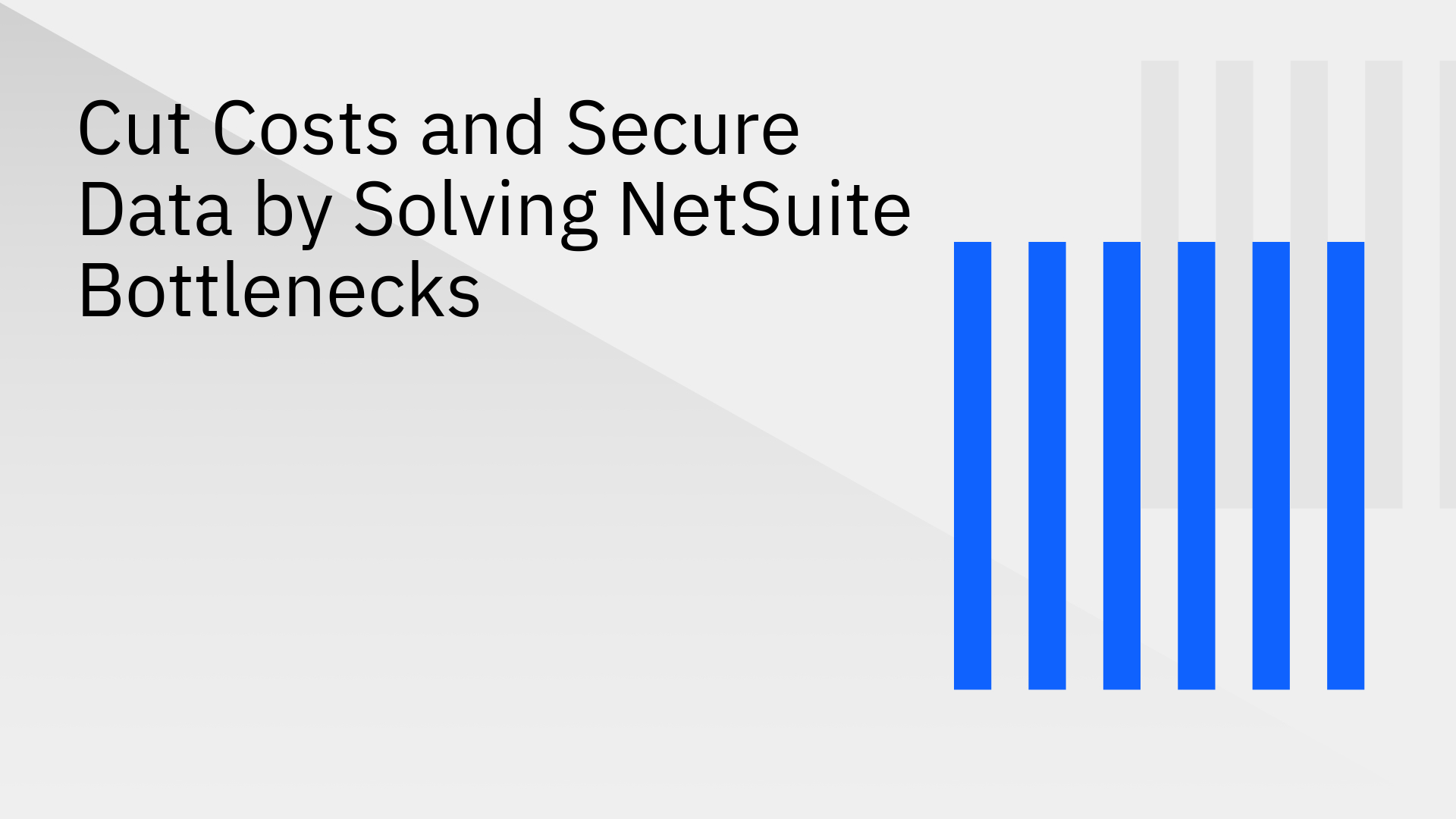
NetSuite stands as a powerful, central ERP for countless businesses, offering a comprehensive suite for financials, inventory management, and e-commerce. However, as organizations scale and operational complexity grows, NetSuite can become slow and inefficient. These performance issues are often symptoms of a deeper problem: NetSuite integration bottlenecks that disrupt the flow of critical data between your ERP and other essential applications.
These bottlenecks create hidden costs, introduce security vulnerabilities, and ultimately limit your ability to grow. This article will identify the most common bottlenecks, explain their direct impact on your costs and data security, and present a modern solution designed to resolve them permanently.
A NetSuite bottleneck is any point of friction that slows down, disrupts, or completely halts the seamless flow of data between NetSuite and other business systems like your CRM, e-commerce platforms, or Warehouse Management Systems (WMS). While occasional slowdowns may seem like minor annoyances, their cumulative effect has a significant financial and operational impact.
Identifying the source of friction is the first step toward building a more efficient and secure data architecture. Here are four of the most common NetSuite integration bottlenecks that slow down your business.
NetSuite imposes strict limits on API requests and concurrent connections to protect system stability [7]. As your data volume grows, especially when integrating with high-frequency platforms like Salesforce or HubSpot, it becomes easy to exceed these quotas.
When you hit these limits, the consequences are immediate: data syncs fail, critical updates are delayed, and information becomes inconsistent across your tech stack. Many businesses resort to inefficient workarounds like nightly batch processing—which defeats the purpose of real-time operations—or build complex custom logic that is prone to failure. An API rate limit-proof data sync solution is essential for maintaining uninterrupted data flow.
A common but problematic approach is building point-to-point connections using custom scripts, often with NetSuite's own SuiteScript. While this offers initial flexibility, it quickly creates a significant technical bottleneck. These custom integrations are:
Furthermore, these custom solutions often lack robust error handling, leading to silent sync failures where data loss occurs without any notification, creating data integrity issues that can go unnoticed for weeks.
Without a real-time, bidirectional synchronization strategy, data silos inevitably form. This means different departments end up working with conflicting versions of the truth. For instance, a sales representative updates a customer's address in your CRM, but the change doesn't propagate to NetSuite. The finance team then sends an invoice to the old address, causing payment delays and customer frustration.
This disconnect forces teams to spend valuable time on manual data reconciliation, a process that is both inefficient and highly error-prone. Without a single source of truth, you face a high risk of creating duplicate records, which can corrupt your entire data ecosystem. It is critical to fix duplicate data caused by failing integrations to maintain data hygiene.
Running complex saved searches and generating large reports directly within NetSuite consumes a tremendous amount of processing power. This is a widely recognized performance issue that can slow down the entire system for all users, effectively creating an access bottleneck [1].
While this may not seem like a traditional integration problem, it prevents users from accessing the data they need in a timely manner without degrading core ERP performance [4]. The most effective solution is to offload this analytical workload, which is itself an integration challenge that requires moving data efficiently out of NetSuite.
Resolving these bottlenecks requires moving beyond outdated integration methods. Stacksync is a modern data integration platform purpose-built to provide real-time, reliable, and bidirectional data flow, effectively eliminating these common challenges. Instead of wrestling with complex APIs and fragile code, Stacksync offers a robust framework that is revolutionizing NetSuite data integration.
Here is how Stacksync directly addresses each of the top NetSuite integration bottlenecks:
By solving the root causes of NetSuite integration bottlenecks, Stacksync delivers on two critical business promises: reducing costs and enhancing data security.
Stop applying temporary fixes to persistent NetSuite integration bottlenecks. To truly scale your operations, you need a modern, secure platform designed for the demands of real-time business. Stacksync provides a robust, two-way sync solution that eliminates common bottlenecks, dramatically reduces operational costs, and fortifies your data security.
Ready to see how a bottleneck-free architecture can transform your business? Learn more about Stacksync's NetSuite integration capabilities and book a demo with one of our cloud architects today.